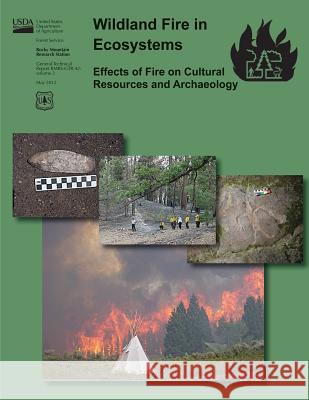Wildand Fire in Ecosystems: Effects of Fire on Cultural Resources and Archaeology » książka
Wildand Fire in Ecosystems: Effects of Fire on Cultural Resources and Archaeology
ISBN-13: 9781480198821 / Angielski / Miękka / 2012 / 234 str.
Cultural resources refer to the physical evidence of human occupations that cultural resource specialists and archaeologists use to reconstruct the past. This includes the objects, location, and landscapes that play a significant role in the history or cultural traditions of a group of people. Cultural resources include artifacts of historical significance left by prehistoric aboriginal peoples. Archaeological constituents, the basic units of archaeological analysis, consist of artifacts and features. Artifacts include carved objects, pottery, and ceramics, flaked and ground stones, faunal and floral remains, glass, and metal. Features include earthen works, rock art, midden soils, and structured. Cultural resources are at risk of being damaged by wildfires as well as active natural resource management. In Canada and the United States, managers have legal requirements to protect cultural resources during fuels treatments, restoration activities, wildfire suppression, and post-fire rehabilitation. The successful implementation of prescribed burning and wildfire suppression in cultural resources sensitive areas requires integration of cultural resources and wildland fire science. Knowledge of the local archeology, artifact materials, site types, and context is essential to minimizing the negative impacts of all management activities. Likewise, understanding fuels, fire behavior, and heat transfer mechanisms is key to predicting, managing, and monitoring the effects of fire on cultural resources. This volume of the "Rainbow Series" synthesizes the relationships between fire and cultural resources. It presents the reader with the context of contemporary fire use and how these fire management tactics may affect prehistoric and historic cultural resources. It synthesizes the impacts of fire and fire management on various types of cultural resources and identifies management strategies to minimize negative impact on cultural resources.
Zawartość książki może nie spełniać oczekiwań – reklamacje nie obejmują treści, która mogła nie być redakcyjnie ani merytorycznie opracowana.











